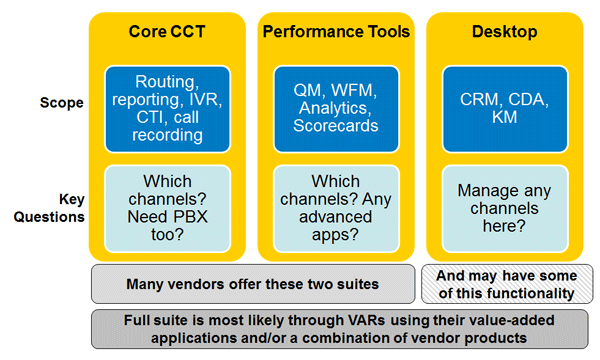Every small center aspires to deliver good (or great!) service to customers and offer a good (or great!) place for employees to work. The realities of small centers and big technology can make these rather simple goals feel rather daunting.
 Although sophisticated contact center technology has been available a long time, robust solutions at an affordable price has not been the norm. Small centers often use limited functionality from the enterprise “phone system” or a very basic solution to meet specific needs. When it comes to managing multimedia communications, we often see a cloud-based chat tool and Outlook for email, presenting challenges to manage performance and use resources across media effectively.
Although sophisticated contact center technology has been available a long time, robust solutions at an affordable price has not been the norm. Small centers often use limited functionality from the enterprise “phone system” or a very basic solution to meet specific needs. When it comes to managing multimedia communications, we often see a cloud-based chat tool and Outlook for email, presenting challenges to manage performance and use resources across media effectively.
Manual interaction handling processes cover for little automation or workflow and a lack of tools like Knowledge Management. But these manual processes contribute to long training and handle times, and potentially low First Contact Resolution (FCR). A cluster of desktop systems cobbled together have a similar effect.
As for contact center support, Excel spreadsheets are the default tools for workforce planning. Basic call recording suffices for quality monitoring with no functionality for quality scoring and calibration. These technology deficits compromise how well, and how often, important support tasks are performed.
A serious situation can occur when technology approaches End-of-Life, risking instability before the company gets around to replacing it. Limited IT (and/or vendor) support is often a contributor to this situation, with no expertise, interest, or time to focus on contact center technology. A shortage of support resources leaves managers and supervisors wearing many hats and, almost inevitably, neglecting some important tasks. They can’t do it all!
But things are looking up!
Vendors now offer much greater capabilities to small centers in both breadth and depth. The enterprise market has matured, and technology innovations, such as software-only solutions running on virtual machines, have reduced costs. Major vendors know the small center market is BIG. Cloud vendors make it “easy and quick” with little reliance on IT.
Most vendors targeting small centers start with a suite of core technology such as ACD (routing and reporting), IVR, CTI, and call recording. Most of these will offer a wide range of channels. Some suites offer performance tools like WFM, QM, VoC, analytics, scorecards, etc., many of which weren’t typically the realm of small center solutions or came from third parties. The suite offering doesn’t mean you have to turn it all on at once. So for example, a small center may start with the QM functionality to go with the recording capability, then add more functionality later. You may even find desktop elements such as CRM and KM as options from a VAR.

As you explore the contact center technology opportunities, consider both the vendor products and their partner offerings. You might find combinations of products, add-on applications, and professional services that help you achieve your goals. Value Added Resellers (VARs) can play important roles for small centers.
If you can’t get IT help or hire support staff in your center, you can buy additional expertise and support to go with your technology. With Managed Services, the vendor takes on more of the traditional IT role, with a spectrum of possibilities for implementation and ongoing management, and proactive and reactive tasks. It’s not a low cost solution, but it’s a good option when you need an extra measure of support.
Are you interested in exploring these possibilities? Contact us or download a copy of How to Get a Lot (of Technology) for a Little (Center).
